Workbook in Excel: Meaning, Function, and How to Use It
Home >> Excel Tutorials from Compute Expert >> Excel Tips and Trick >> Workbook in Excel: Meaning, Function, and How to Use It
In this tutorial, you will learn deeply about what is an excel workbook and how to operate it.
When we work in excel, we will use a workbook to do our work. Thus, if we want to get optimum results from our excel work, it will be good if we understand much about this workbook that we frequently use.
Want to know more about the workbook and how you can utilize it to work better in excel? Read this tutorial until its last part.
Disclaimer: This post may contain affiliate links from which we earn commission from qualifying purchases/actions at no additional cost for you. Learn more
Want to work faster and easier in Excel? Install and use Excel add-ins! Read this article to know the best Excel add-ins to use according to us!
Table of Contents:
- Workbook meaning in excel
- Excel workbook and worksheet differences
- Excel workbook parts
- Workbook functions
- How to create a new workbook in excel
- How to create a new workbook from a template in excel
- How to open a workbook in excel
- How to save a workbook in excel
- How to pin an excel workbook
- How to close a workbook in excel
- How to protect a workbook in excel
- How to unprotect a workbook in excel
- How to share a workbook in excel
- How to combine excel workbooks
- How to print an excel workbook
- How to refer to another workbook in excel
- Workbook compatibility mode
- How to convert a workbook from its compatibility mode
- Workbook shortcuts in excel
- Additional Note
Workbook Meaning in Excel
A workbook is an excel file unit where the worksheets and the tools with which we do our excel work are in. You can see an example of an excel workbook below.
Excel Workbook and Worksheet Differences
A workbook comprises worksheets and tools for excel work while a worksheet comprises rows, columns, and cells where we input and process our data in excel. In other words, a worksheet is a part of a workbook.To better understand their differences, here is an example of what we call a worksheet in excel (in the red box). Compare it to what we called a workbook previously.
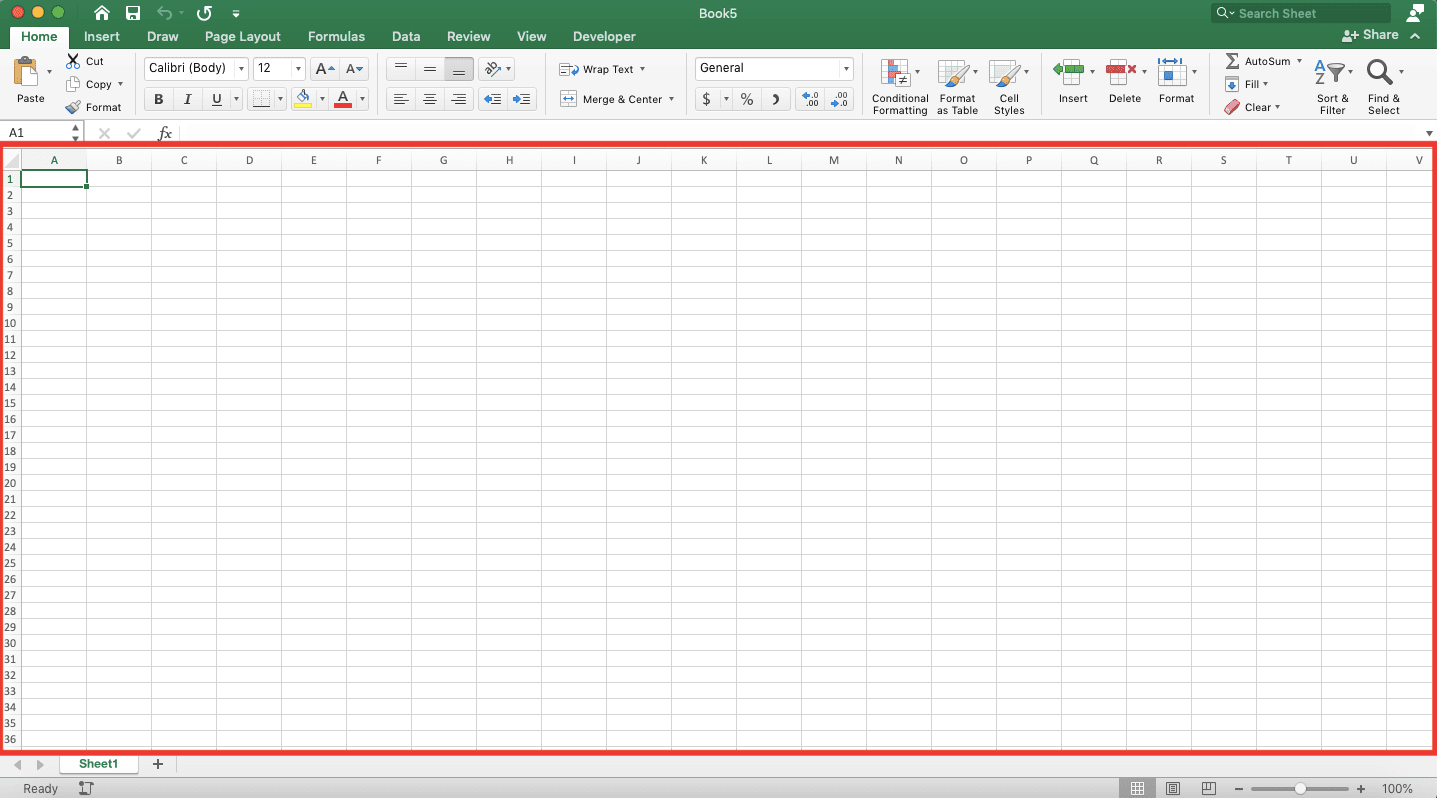
Excel Worksheet Parts
Here are the parts of an excel workbook in an illustration.
And here is a brief description of those parts.
- Title bar: The name of the workbook file
- Quick access toolbar: The place where you can place some command buttons so you can access them much easier
- Menu bar: The division of commands in the ribbon
- Ribbon: The place where you can find the command buttons you need to run for your excel work
- Address bar: The box that shows where your active cell currently is in column and row coordinates
- Formula bar: The box that shows the value of your active cell or the formula if there are any
- Active cell: The cell you currently select
- Column letters: The place that shows the column letters of all the cells currently displayed in the worksheet
- Row numbers: The place that shows the row numbers of all the cells currently displayed in the worksheet
- Sheet bar: The place that shows all the worksheets in the workbook, the active worksheet, and the button to add a worksheet
- Status bar: The place that shows the current status of your workbook and gives some quick calculation results when you highlight a cell range with multiple data
- View buttons: The place where you can select the view mode of your active worksheet
- Zoom slider: The place where you can manage the zoom level of your active worksheet
Workbook Functions
In Excel, a workbook helps us to:- Input and process our data
- Manage our worksheets
- Save our excel work
As a workbook is essentially a file in excel, we should manage it well so we can do our work in excel smoothly.
How to Create a New Workbook in Excel
Creating a new workbook in excel is easy. Here are the steps to do that.-
Click the File button on the top left of your workbook

-
Double-click the Blank workbook icon on the right or click New and do the same

- Done!
How to Create a New Workbook from a Template in Excel
To create a new workbook from the available templates, here are the things you need to do.-
Click the File button on the top left of your workbook

-
Click New (New from Template… on Mac)

-
Search for the template you want to use on the right. When you have found the template, double-click on it

- Done!
How to Open a Workbook in Excel
Need to open a workbook file to continue your work? Do this.-
Click the File button on the top left of your workbook
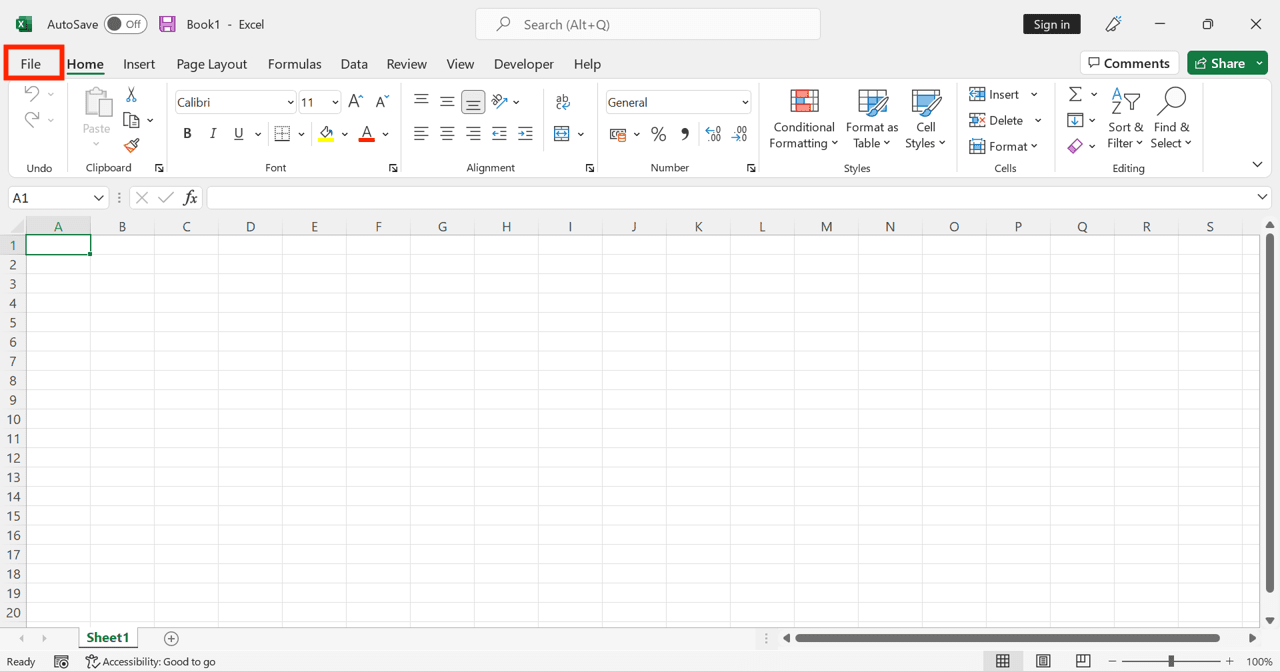
-
Click Open and then click Browse

-
Locate the workbook file you want to open in the Open dialog box

-
Double-click on the file
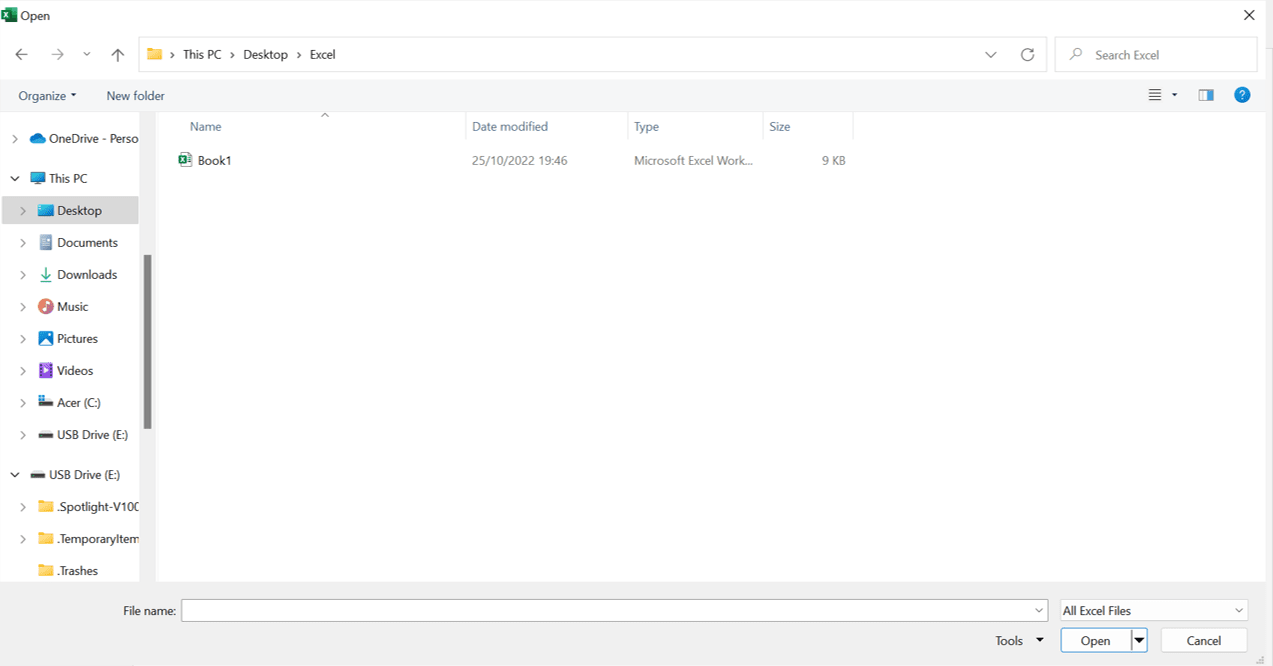
- Done!
How to Save a Workbook in Excel
To save a workbook file in excel, follow these steps.-
Click the File button on the top left of your workbook

-
Click Save As and then Browse

-
Locate the folder where you want to save your workbook file in the dialog box shown

-
Give a name to the workbook file in the File name text box

-
Choose the workbook file type in the Save as type dropdown. If you just want to save the workbook to a standard excel file type, ignore this step as excel automatically selects the standard file type

-
Click Save
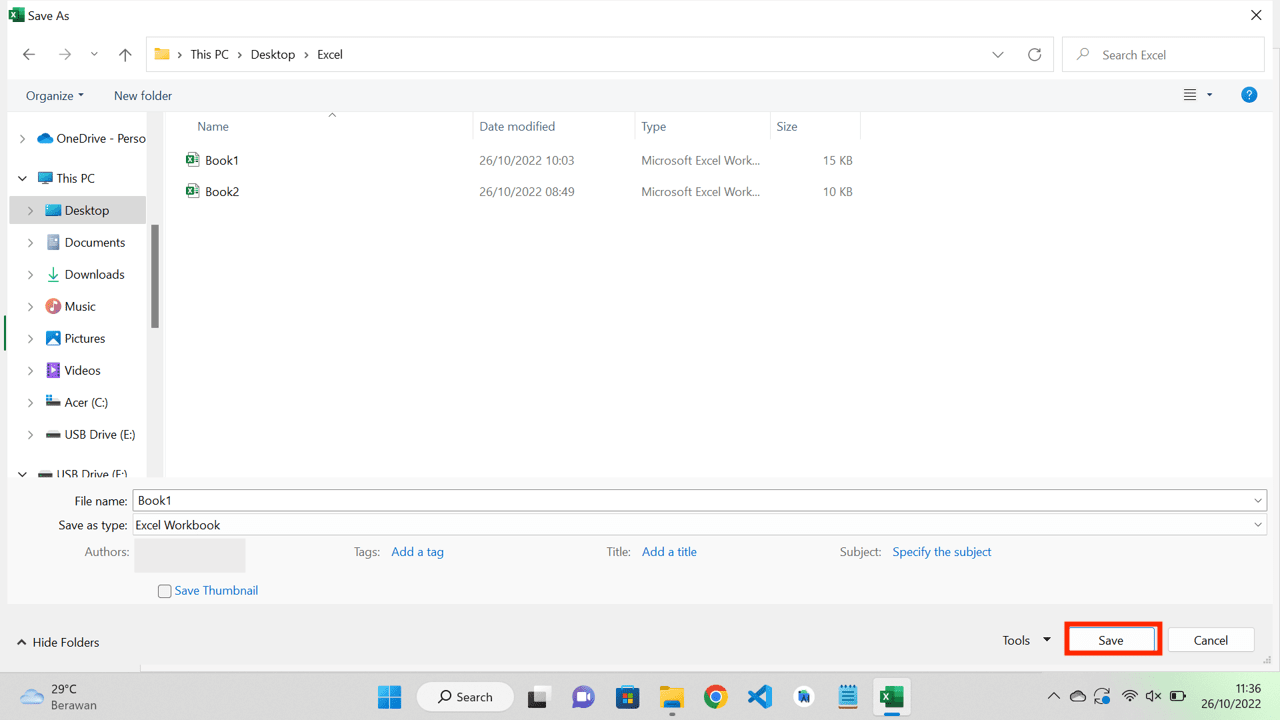
- Done!
If you have saved your workbook file before and just want to overwrite the file, just click File and then Save.
How to Pin an Excel Workbook
You may want to pin an excel workbook file so you can locate it easier when you want to open it. Here are the steps to do that.-
Click the File button on the top left of your workbook

-
Click Save As and then click Recent

-
Locate the workbook file you want to pin on the right and hover your pointer above it

-
Click the Pin icon that shows up next to the workbook file or right-click on the file and choose Pin to List

- Done!
If you use Mac, you can open your excel program and pin the workbook file you want in the excel start screen.
How to Close a Workbook in Excel
To close a workbook file (not the excel program itself), here are the steps.-
Click the File button on the top left of your workbook

-
Click Close

- Done!
How to Protect a Workbook in Excel
Need to protect your workbook so only people who know its password can open it? Here are the things that you can do.-
Click the File button on the top left of your workbook

-
Click Info, Protect Workbook, and Encrypt with Password (just click Passwords… on Mac)

-
Enter the password you want for your workbook file and click OK

- Done!
You can also just protect your workbook from structure modification such as worksheets insertion or deletion. Here are the steps to do that.
-
Click the Review tab on your Excel ribbon

-
Click Protect Workbook
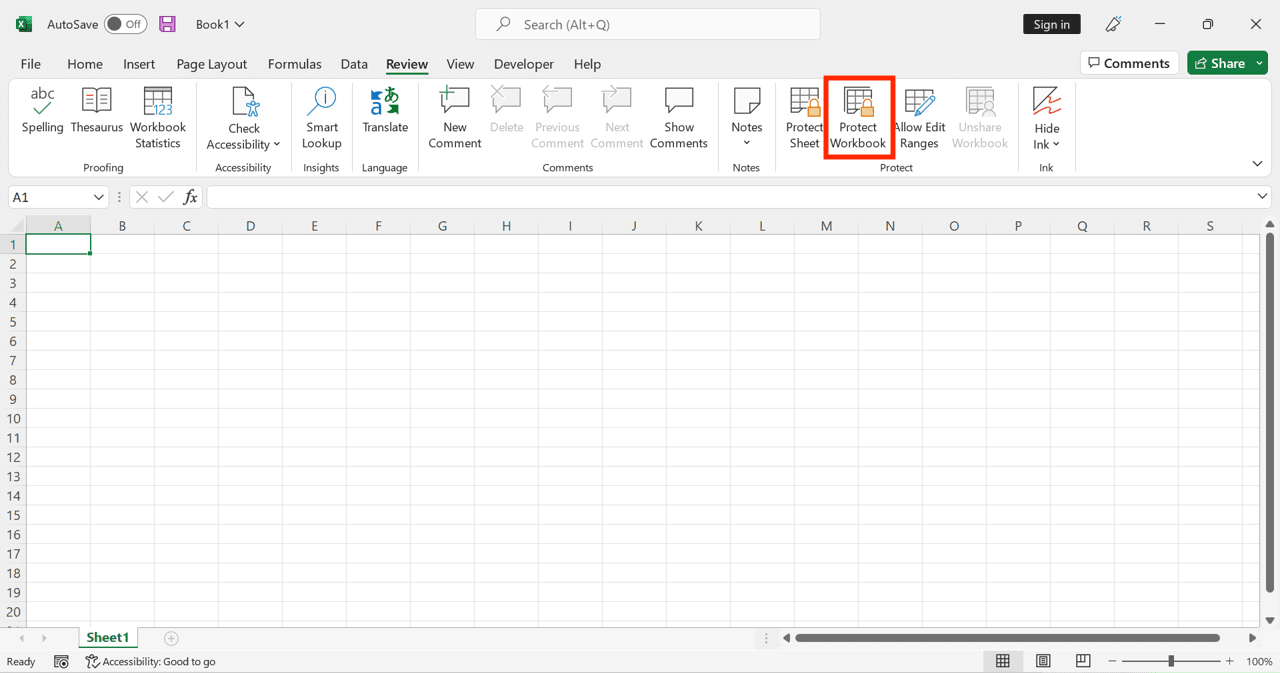
-
Enter the password that you will need to input when you want to unprotect the workbook structure later and click OK

- Done!
How to Unprotect a Workbook in Excel
If you want to unprotect your workbook so people can open it without having to input any password, just repeat the steps to protect the workbook earlier. However, when you need to enter the password, make sure that the password text boxes are blank before you click OK.To unprotect the workbook from the structure modification protection, repeat the steps to apply for the protection too. However, this time, you need to input the password you use to protect it earlier instead of inputting a new password.
How to Share a Workbook in Excel
Since its 2016 version, excel makes it easy to share a workbook with other people. Here are the steps to do it.-
Click the Share button on the top right of your workbook

-
Click Share
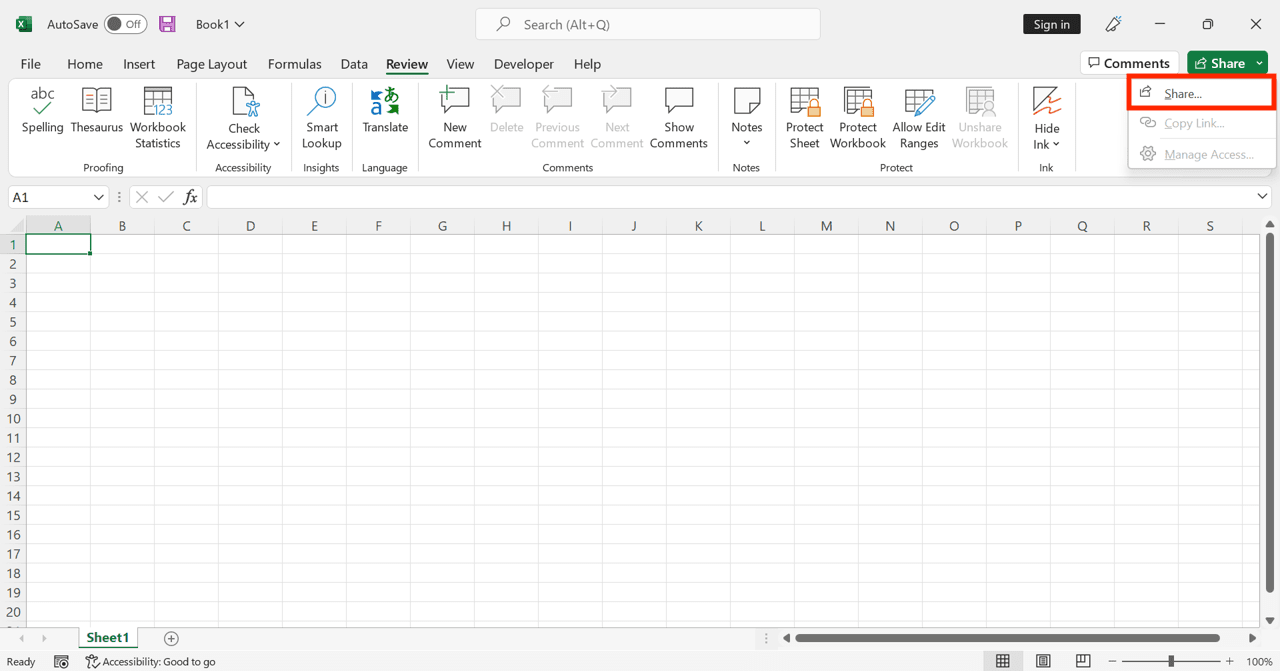
- Sign in to your Microsoft account and upload your workbook to OneDrive if you haven’t
-
Input the people you want to share your workbook with, your message, and the share permission in the dialog box shown

-
Click Send
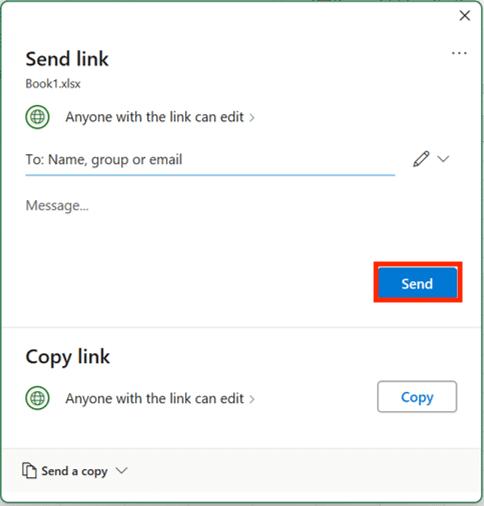
- Done!
How to Combine Excel Workbooks
To combine the data and its processing results you have in multiple workbooks, you just have to copy their sheets into one workbook. Here are the steps to do the combination process.- Open all the workbooks you want to combine
-
Activate one workbook whose worksheets you want to combine with another workbook

-
Select all the worksheets of the workbook by clicking the sheet tab on the most left, pressing and holding the Shift button, and then clicking the sheet tab on the most right

-
Right-click on the sheet tabs and choose Move or Copy…

-
In the dialog box shown, click on the To book dropdown and choose the workbook where you want to combine your current workbook to
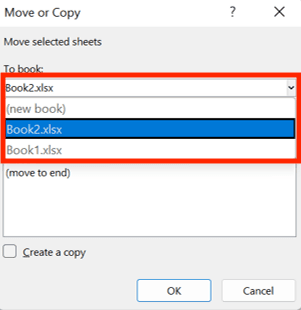
-
Choose the sheet tab in the destination workbook where you want to place the worksheet tabs before it in the Before Sheet box
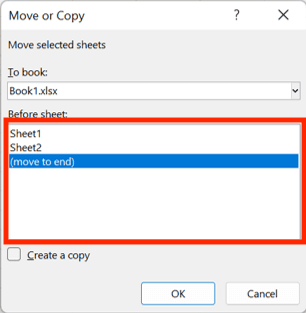
-
Click OK

- Repeat steps 2-7 for other workbooks that you want to combine with the destination workbook
-
Done!

How to Print an Excel Workbook
Need to print your excel workbook so you can have its hardcopy version? Here are the steps to do it.-
Click the File button on the top left of your workbook

-
Click Print

-
Set the printing process and results in the way you want

-
Click Print

- Done!
If you want to learn the way to set your printing process and results properly, check out this excel printing tutorial from us.
How to Refer to Another Workbook in Excel
Need to refer to the data in another workbook when you write a formula in excel? You can do that by implementing these steps.- Open the workbook to which data you want to refer
- When you need to refer to that workbook data in the formula you type, activate the workbook
- Select the worksheet and then the cell/cell range to which data you want to refer to
- Done!
Workbook Compatibility Mode
Your excel workbook enters compatibility mode when you save it into an older excel file format (Xls). In this mode, you cannot use the features that only newer excel versions have. This is to ensure that the data and processing results in the workbook can be viewed and edited optimally when you open the workbook file in an older excel version.You usually use this compatibility mode when you work with other people who use an older excel version. When you just apply the compatibility mode on your workbook file, excel usually shows a dialog box with a list of compatibility issues in your workbook if there are any. Check and fix the points on this list to ensure your workbook can run optimally in older Excel versions.
How to Convert a Workbook from Its Compatibility Mode
Compatibility mode makes you cannot use features from the newer excel version. To exit the compatibility mode of a workbook file, save it into a newer excel file format by following these steps.-
Click the File button on the top left of your workbook

-
Click Save As and then Browse

-
In the dialog box shown, click on the Save as type dropdown and choose Excel Workbook. If your workbook has macros, choose Excel Macro-Enabled Workbook

- Locate the folder where you want to save the workbook file without the compatibility mode
-
Click Save

- Done!
Workbook Shortcuts in Excel
Shortcuts can get you to work much faster in excel. Here are some shortcuts you can use related to the operation of a workbook in excel.| Description | Windows | Mac |
|---|---|---|
| Create a new workbook file | Ctrl + N | Command + N |
| Open a workbook file | Ctrl + O | Command + O |
| Save a workbook file | Ctrl + S | Command + S |
| Save as a workbook file | F12 | Command + Shift + S |
| Close current workbook | Ctrl + F4 | Command + W |
| Move to the next workbook | Ctrl + Tab | Before Excel 2016:
Control + Tab After Excel 2016: Command + ` |
| Move to the previous workbook | Ctrl + Shift + Tab | Before Excel 2016:
Control + Shift + Tab After Excel 2016: Command + Shift + ` |
| Minimize current workbook | Ctrl + F9 | Command + M |
| Maximize current workbook | Ctrl + F10 | Fn + Control + F10 |
Additional Note
If possible, you should separate the data you use in your work into sheets instead of workbooks. That way, it will be much easier for you to process it in one go.Related tutorials you should learn:














